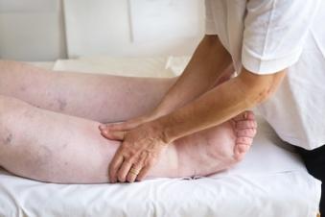Head and Neck Trauma Surgery: Clinical Challenges for Wound Management
February 3, 2017
The Inpatient Rehab Facility where I currently work as the Wound Coordinator is a discharge site for a major medical center with an excellent Head and Neck Cancer program, as well as a Trauma Center. This has resulted in a handful (or more) of patients with complex facial and neck reconstruction each year. These people present special needs beyond just healing incisions.
In head and neck cancer, the incisions can be from shoulder to shoulder, up each side of the neck, and outline the bottom jaw. They can include a skin and muscle flap, lymph node dissection, and a tracheostomy. Trauma patients with extensive facial fractures and soft tissue injuries can have varying suture lines and approaches to reconstruction.
Challenges of Wound Care after Head or Neck Surgery
The challenge of healing each of these extensive surgeries can be complicated by nutritional compromise due to dysphagia, as well as the need for modified diets or a PEG. Comorbidities such as diabetes, steroid use, or history of smoking can also delay healing. Lymph node dissection can cause edema in the submandibular area, mouth, and face. With extensive lymph node removal, arm edema is a possibility as well. Depending on the fractures, tissue destruction, and trauma, those with facial trauma can have edema as well. For both, effects from the edema can mean difficulty speaking, seeing, and swallowing, and also raise psychosocial issues due to appearance.
As always, the incisions are cleaned and monitored for signs of infection, but much more is needed to assure healing. Nutrition is optimized via consultation with a dietitian, who will assure adequate calories via oral or other means. Patient education on the importance of nutrition for recovery and healing are also needed.
For either cancer or trauma patients, Manual Lymphatic Drainage (MLD) therapists can also improve healing, decrease dehiscence risk, improve ability to speak/swallow, and assess if these areas are affected by lymphedema (or at risk). Patients are taught deep breathing to activate the lymphatic system via compression, vacuum action on the thoracic and abdominal lymph nodes, and milking the thoracic duct and right subclavian trunk. Alternative pathways for lymph drainage after radical head and neck surgery may be established through superficial tissue channels on the face and under the mandible, and directed over the scalp to the back and intercostal nodes.
Trauma patients may have their normal patterns of lymphatic drainage disrupted in unpredictable areas. The new pathways are created on an individual basis for each trauma patient. If periorbital or oral edema are severe, establishing sight and communication for these patients are crucial for quality of life and motivation for recovery.
Throughout the rehab stay, occupational therapists are teaching the patient adapted Activities of Daily Living (ADL). This includes precautions to minimize and prevent exacerbation of lymphedema. ADL must be modified by moderating extremes of temperature in the environment and with food, as heat or cold could cause swelling. Trauma to the face should be avoided by using an electric razor when shaving, sun block, use of broad brimmed hats or umbrellas, air or towel drying wet hair, avoiding scented facial or cosmetic products, and meticulous but gentle oral care. Dental visits may require premedication with antibiotics. Tattooing of the face and neck, waxing, laser treatments, electrolysis, and piercing should all be avoided.
Recovery and treatment of the head and neck cancer or head trauma patient goes beyond the surgery. Modifications in diet, adapted ADL, instruction in self-MLD, and taking precautions to heart are essential components of recovery. Some patients may need compression garments to deal with the lymphedema.
Locating a certified Lymphedema Therapist can be done at www.clt-lana.org or using the mobile app Look4LE.
About the Author
Janet Wolfson is a wound care and lymphedema educator with ILWTI, and Lymphedema and Wound Care Coordinator at Health South of Ocala with over 30 years of field experience.
The views and opinions expressed in this blog are solely those of the author, and do not represent the views of WoundSource, HMP Global, its affiliates, or subsidiary companies.












Follow WoundSource
Tweets by WoundSource